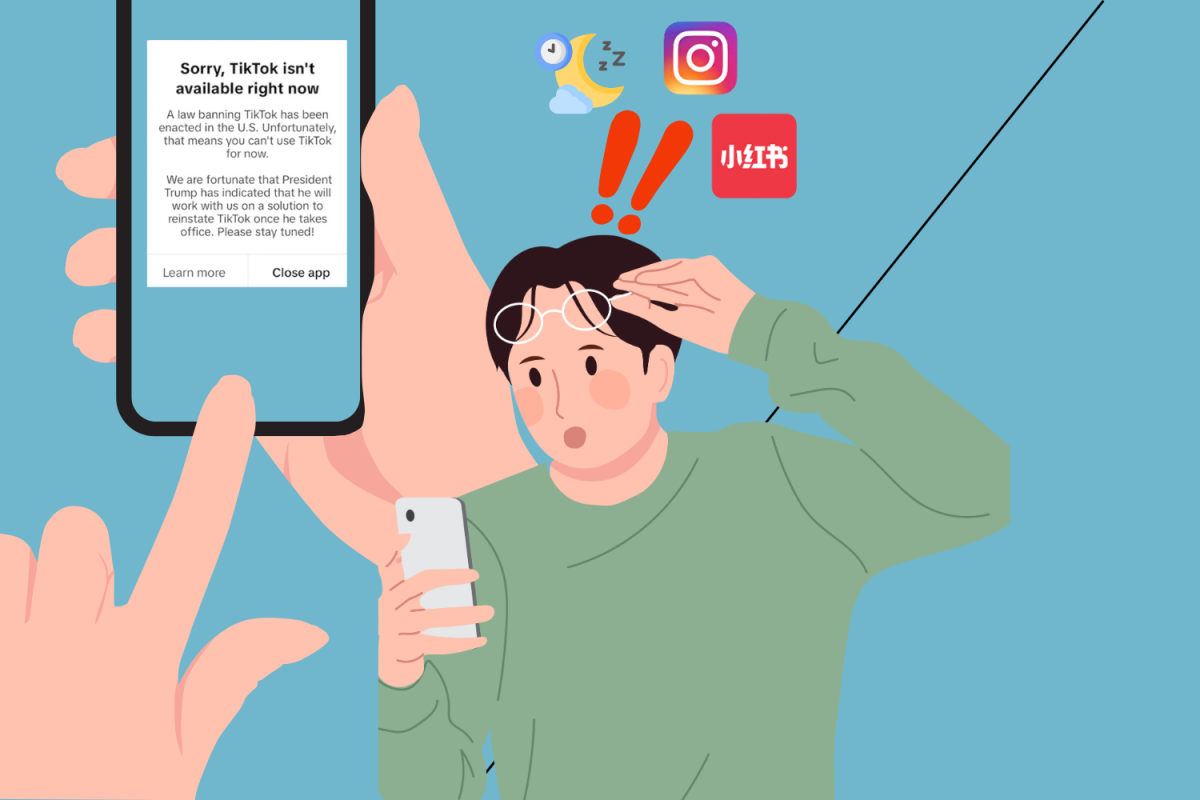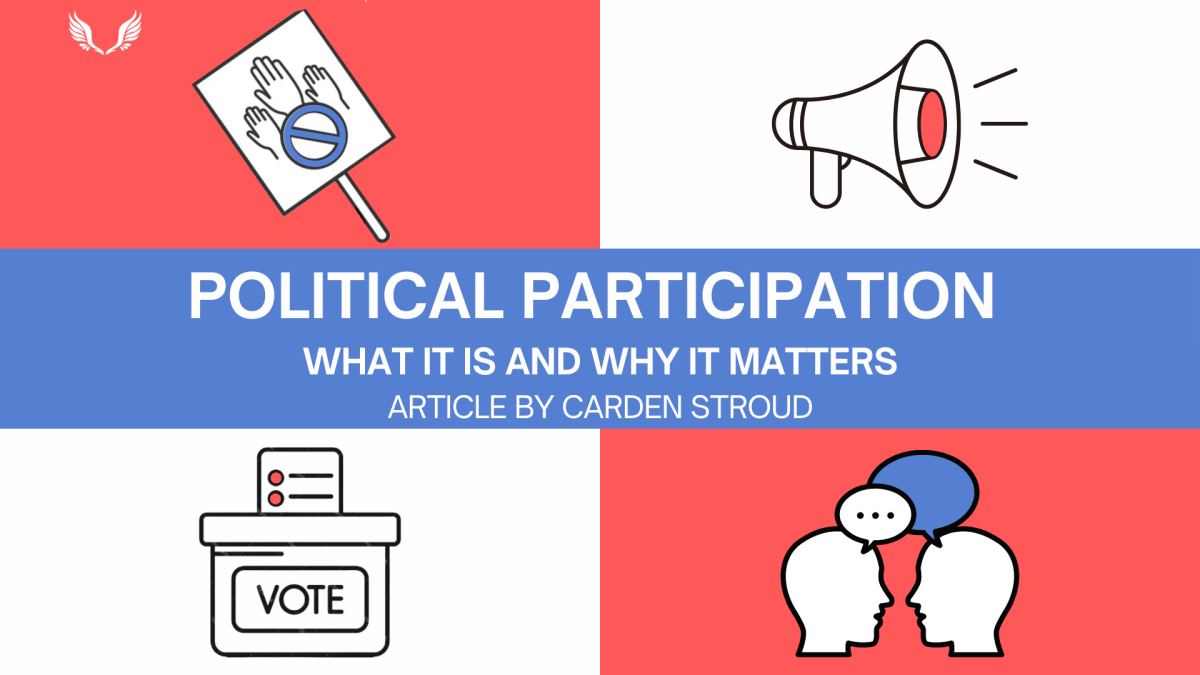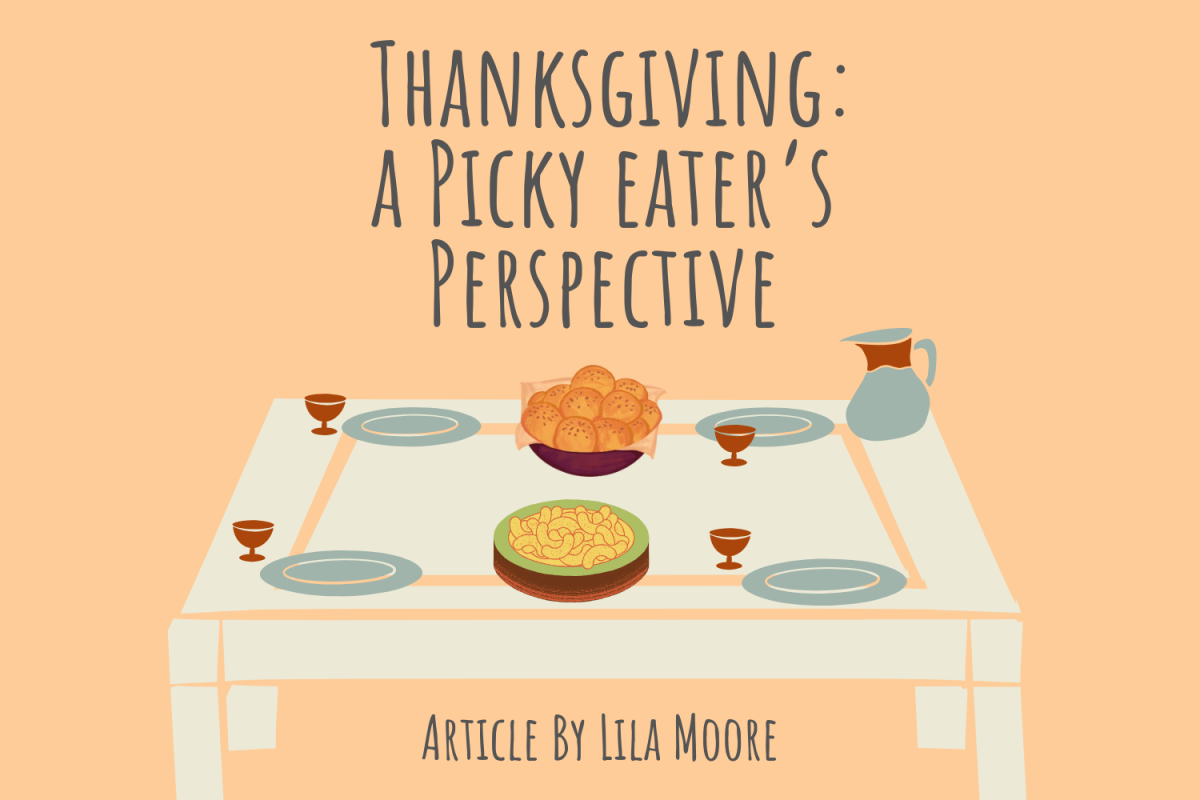It’s Thanksgiving Day, and you’ve just sat at the dinner table with a plate full of food. Auntie Sheryl, sitting beside you, shakes her head and sighs. “Should you be eating all of that?” she asks. You look down at the plate, full of calories and carbs, and decide that no, maybe you shouldn’t be. You put your dinner roll back.
Later, while watching a football game on the couch, Grandpa Arthur cracks a joke about his ever-growing waistline to you. You laugh along, pretending that the comment doesn’t make you wish you had also put the peach cobbler back.
While Auntie Sheryl and Grandpa Arthur are nothing but figments of my imagination, comments similar to theirs are heard by family members throughout Thanksgiving. Weight, food intake, and body structure are discussed around the table, stinging remarks disguised as harmless jokes. This creates a breeding ground for body image issues and eating disorders. However, these problems tend to fly under the radar, making them a silent struggle that is often misunderstood.
Eating disorders are mental illnesses characterized by irregular eating habits, though they can take many forms. Binge eating disorder, the most common eating disorder in the United States, is most commonly associated with overeating, binging, and eating when not hungry. Similarly, bulimia nervosa is known for binging but typically includes purging afterward. The world’s deadliest mental illness, anorexia nervosa, is distinguished by body dysmorphia, restrictive food intake, and excessive exercise. I know these symptoms from personal experience.
At the age of 11, I was diagnosed with anorexia nervosa. The disorder started as a general dislike of my body, then eventually progressed to an obsessive hatred. I started eating less, exercising more, and weighing myself, essentially becoming the textbook definition of my diagnosis by the time Thanksgiving rolled around.
However, the cause of my diagnosis wasn’t as simple as an unnecessary comment at the Thanksgiving table. Many different aspects of my life contributed to it, which is often the case for the other 9% of the U.S. population who are diagnosed.
For example, many eating disorders have an underlying emotional aspect. Those who struggle with one of these disorders commonly struggle with other mental illnesses as well, such as anxiety, obsessive-compulsive disorder, or depression, which can act as the backbone of an eating disorder.
Esther Whyte, a Licensed Professional Counselor Associate (LPC-A), works with children, adolescents, and adults at the Mood Treatment Center in Winston-Salem. She has received specialized training and supervision in treating eating disorders.
“Eating disorders are about so much more than food,” Whyte explains. “They have a huge emotional component, and food acts as a coping mechanism.”
My eating habits, or lack thereof, were a coping mechanism for the seasons changing. When fall and winter rolled around, the lessened sunlight caused me to have more issues with body dysmorphia. It was essentially seasonal depression, but related to food and exercise instead. This tends to be a common pattern amongst others, making the Thanksgiving season hard even without the nitpicky comments.
However, it’s important to remember that every season has positives and negatives. Some people are more affected by the “bikini body” of spring and summer, while others are affected more by the “Auntie Sheryl” character of the fall and winter seasons. Either way, every version of eating disorder is valid and not something to be ashamed of. I had to learn that lesson the hard way.
“I just want to feel normal,” I remember telling my mom after I had just been diagnosed. Despite the strange new reality I was being thrown into, I wish I could tell my younger self that she was.
Below is a list of resources for those who are or may be struggling with an eating disorder:
































































Sophia Fusco • Dec 5, 2024 at 9:00 am
I love this article and it really spoke to me because I struggle with my weight my family also talks about body weight ever time we have a family gathering.
Kylee Coster • Nov 27, 2024 at 6:41 pm
This article was really insightful I showed all my friends to help raise awareness!